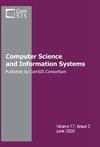客户视角下基于云的ERP建设流程框架
IF 1.2
4区 计算机科学
Q4 COMPUTER SCIENCE, INFORMATION SYSTEMS
引用次数: 0
摘要
推导了实施云企业资源规划(ERP)的流程框架,并利用流程工程特征,通过与本地ERP建设流程的详细比较,对每个流程进行了检查。实施云ERP的流程框架根据构建类型分为基础设施即服务(IaaS)、平台即服务(PaaS)、内容即服务(CaaS)和软件即服务(SaaS),并基于6个派生流程、21个活动和众多特定任务进行定义。最后提出的流程框架的流程工程特征与本地ERP建设流程的异同进行了进一步的分析和检验。本研究为云ERP建设方法的规范化研究提供了理论基础。作为利益相关者的实用指南,它可以在实践中用作过程定制工具,为每个构建阶段提供有关特定活动和任务的信息,有助于构建和传播可靠的基于云的ERP系统。年代的视角。本文章由计算机程序翻译,如有差异,请以英文原文为准。
Cloud-based ERP construction process framework in the customer's perspective
Process frameworks for the implementation of cloud enterprise resource planning (ERP) were derived and each process was examined through detailed comparisons with on-premise ERP construction processes, using process engineering characteristics. The process frameworks for implementing cloud ERP are classified into infrastructure-as-a-service (IaaS), platform-as-a-service (PaaS), content-as-a-service (CaaS), and software-as-a-service (SaaS), depending on the construction type, and are defined based on 6 derived processes, 21 activities, and numerous specific tasks. The process engineering characteristics of the final proposed process framework were further analyzed and examined in comparison to on-premise ERP construction processes with respect to differences and similarities. This study provides a theoretical foundation of standardized research on cloud ERP construction methods. As a practical guideline for stakeholders, it can be used in practice as a process tailoring tool, providing information on specific activities and tasks for each construction phase, contributing to the construction and spread of reliable cloud-based ERP systems from the customer?s perspective.
求助全文
通过发布文献求助,成功后即可免费获取论文全文。
去求助
来源期刊

Computer Science and Information Systems
COMPUTER SCIENCE, INFORMATION SYSTEMS-COMPUTER SCIENCE, SOFTWARE ENGINEERING
CiteScore
2.30
自引率
21.40%
发文量
76
审稿时长
7.5 months
期刊介绍:
About the journal
Home page
Contact information
Aims and scope
Indexing information
Editorial policies
ComSIS consortium
Journal boards
Managing board
For authors
Information for contributors
Paper submission
Article submission through OJS
Copyright transfer form
Download section
For readers
Forthcoming articles
Current issue
Archive
Subscription
For reviewers
View and review submissions
News
Journal''s Facebook page
Call for special issue
New issue notification
Aims and scope
Computer Science and Information Systems (ComSIS) is an international refereed journal, published in Serbia. The objective of ComSIS is to communicate important research and development results in the areas of computer science, software engineering, and information systems.
 求助内容:
求助内容: 应助结果提醒方式:
应助结果提醒方式:


